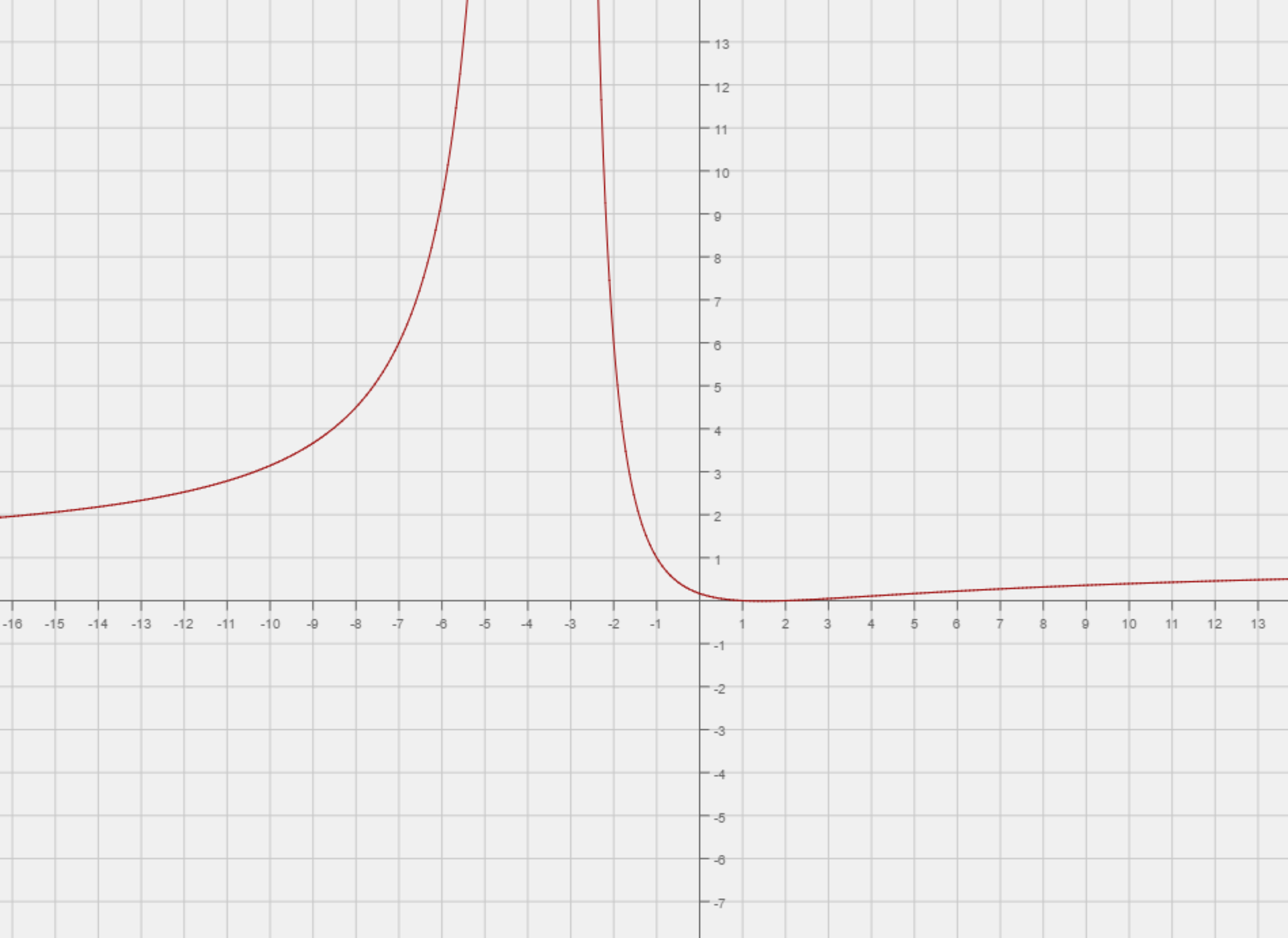Volume of solids of revolution

Let be the volume of the region revolved about the line , and be the volume of the region revolved about the line .
If can be expressed as , find .
The answer is 250.
This section requires Javascript.
You are seeing this because something didn't load right. We suggest you, (a) try
refreshing the page, (b) enabling javascript if it is disabled on your browser and,
finally, (c)
loading the
non-javascript version of this page
. We're sorry about the hassle.
The Volume V 1 = π ∗ ∫ − 2 ∞ ( 1 − y ) 2 d x = 1 0 0 π ∗ ∫ − 2 ∞ ( x + 3 ) 2 ( x + 4 ) 2 x 2 + 2 x + 1
Using partial fractions we obtain:
( x + 3 ) 2 ( x + 4 ) 2 x 2 + 2 x + 1 = x + 3 A + ( x + 3 ) 2 B + ( x + 4 ) C + ( x + 4 ) 2 D
⟹
x 2 + 2 x + 1 = ( A + C ) x 3 + ( 1 1 A + B + 1 0 C + D ) x 2 + ( 4 0 A + 8 B + 3 3 C + 6 D ) + ( 4 8 A + 1 6 B + 3 6 C + 9 D )
⟹
A = − C ⟹
B − C + D = 1
8 B − 7 C + 6 D = 2
1 6 B − 1 2 C + 9 D = 1
⟹
2 C − 3 D = − 3
C − 2 D = − 6
⟹ D = 9 , C = 1 2 ⟹ A = − 1 2 ⟹ B = 4
⟹
V 1 = 1 0 0 π ∗ ∫ − 2 ∞ ( x + 3 − 1 2 + ( x + 3 ) 2 4 + x + 4 1 2 + ( x + 4 ) 2 9 ) d x =
1 0 0 π ∗ ( 1 2 ∗ ln ( 1 + x + 3 1 ) − x + 3 4 − x + 4 9 ) ∣ − 2 ∞ =
1 0 0 π ∗ ( 2 1 7 − 1 2 ∗ ln ( 2 ) )
Similarly, for V 2 we have:
V 2 = π ∗ ∫ − ∞ − 5 ( y − 1 ) 2 d x =
1 0 0 π ∗ ∫ − ∞ − 5 ( x + 3 ) 2 ( x + 4 ) 2 x 2 + 2 x + 1 d x
1 0 0 π ∗ ( 1 2 ∗ ln ( 1 + x + 3 1 ) − x + 3 4 − x + 4 9 ) ∣ − ∞ − 5 =
1 0 0 π ∗ ( 1 2 ∗ ln ( 2 1 ) + 1 1 )
⟹
V 2 − V 1 = 2 5 0 π = a π ⟹ a = 2 5 0 .